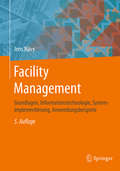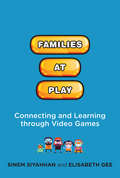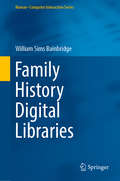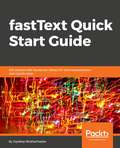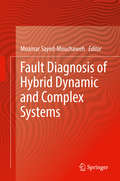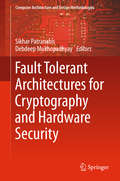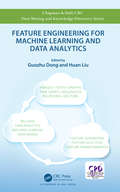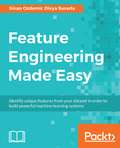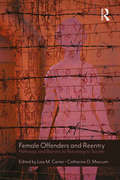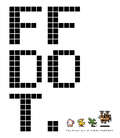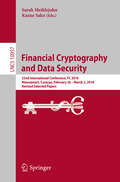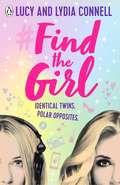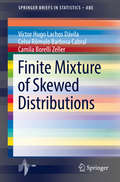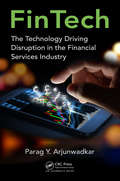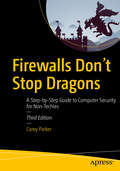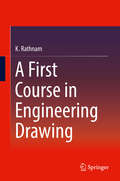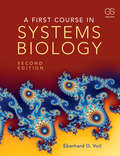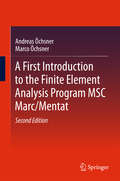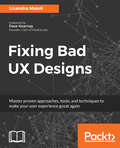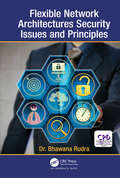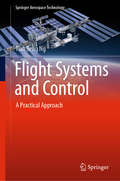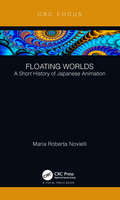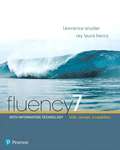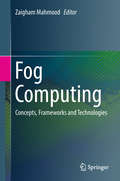- Table View
- List View
Facebook—Can Ethics Scale in the Digital Age?
by Carin-Isabel Knoop George A. RiedelSince its founding in 2004, Facebook has built a phenomenally successful business at global scale to become the fifth most valuable public company in the world. The revelation of Cambridge Analytica events in March 2018, where 78 million users' information was leaked in a 2016 US election cycle, exposed a breach of trust/privacy amongst its user community. In the past, growth at any costs appeared to be the de facto strategy. Now many voices such as regulators, advertisers, ethicists, shareholders and users argued for a more responsible approach to addressing their concerns. Mark Zuckerberg (CEO/Chair/Founder) and Sheryl Sandberg (COO) mapped out their six-point plan to address this existential threat. Could they continue to grow and rectify the breach of trust/privacy? Did other stakeholders have some greater responsibility too? In addition to issues of privacy and trust, there is a growing chorus of concern about "content moderation" - not for the easy topics like spam or copyright material -but for the hard things around political points of view, hate speech, polarizing perspectives, etc. How will Facebook strike the balance between free speech and corrosive content across billions of users and dozens of languages? Are they the arbiters of truth/censorship in the digital world?
Facility Management: Grundlagen, Informationstechnologie, Systemimplementierung, Anwendungsbeispiele
by Jens NävyIndustrie- und Wohnungsunternehmen verwalten ihre Gebäude, Anlagen und Grundstücke mit Hilfe des Facility Management (FM). Dieses Buch informiert über die Informationstechnologie im FM. Das Computer Aided Facility Management (CAFM) bildet dabei den Schwerpunkt. Gegenüber der 3. Auflage sind die Marktübersicht und Ausführungen dazu aktualisiert. Der Autor betreibt selber beratend die Professionalisierung der Gebäude- und Immobilienbewirtschaftung.
Families at Play: Connecting and Learning through Video Games (The John D. and Catherine T. MacArthur Foundation Series on Digital Media and Learning)
by Sinem Siyahhan Elisabeth GeeHow family video game play promotes intergenerational communication, connection, and learning.Video games have a bad reputation in the mainstream media. They are blamed for encouraging social isolation, promoting violence, and creating tensions between parents and children. In this book, Sinem Siyahhan and Elisabeth Gee offer another view. They show that video games can be a tool for connection, not isolation, creating opportunities for families to communicate and learn together.Like smartphones, Skype, and social media, games help families stay connected. Siyahhan and Gee offer examples: One family treats video game playing as a regular and valued activity, and bonds over Halo. A father tries to pass on his enthusiasm for Star Wars by playing Lego Star Wars with his young son. Families express their feelings and share their experiences and understanding of the world through playing video games like The Sims, Civilization, and Minecraft. Some video games are designed specifically to support family conversations around such real-world issues and sensitive topics as bullying and peer pressure.Siyahhan and Gee draw on a decade of research to look at how learning and teaching take place when families play video games together. With video games, they argue, the parents are not necessarily the teachers and experts; all family members can be both teachers and learners. They suggest video games can help families form, develop, and sustain their learning culture as well as develop skills that are valued in the twenty-first century workplace. Educators and game designers should take note.
Family History Digital Libraries
by William Sims BainbridgeIn the modern era, every family and local community can cultivate its own history, endowing living people with meanings inherited from the people of the past, by means of today’s computer-based information and communication technologies. A new profession is emerging, family historians, serving the wider public by assisting in collection and analysis of fascinating data, by teaching talented amateur historians, and by producing complete narratives. Essential are the skills and technologies required to preserve and connect photos, movies, videos, diaries, memoirs, correspondence, artefacts and even architecture such as homes. Online genealogical services are well established sources of official government records, but usually not for recent decades, and not covering the valuable records of legal, medical, and religious organizations. Information can be shared and interpreted by family members through oral history interviews, social media, and online private archives such as wikis and shared file depositories. This book explores a wide variety of online information sources and achieves coherence by documenting and interpreting the history of a particular extended American family on the basis of 9 decades of movies and videos, 17 decades of photographs, and centuries of documents. Starting now, any family may begin to preserve their current experiences for the historians of the future, but this will require social as well as technical innovations. This book is the essential resource, providing the fundamental principles, effective methods, and fascinating questions required to make our past live again.
fastText Quick Start Guide: Get started with Facebook's library for text representation and classification
by Joydeep BhattacharjeePerform efficient fast text representation and classification with Facebook's fastText libraryKey FeaturesIntroduction to Facebook's fastText library for NLPPerform efficient word representations, sentence classification, vector representationBuild better, more scalable solutions for text representation and classificationBook DescriptionFacebook's fastText library handles text representation and classification, used for Natural Language Processing (NLP). Most organizations have to deal with enormous amounts of text data on a daily basis, and gaining efficient data insights requires powerful NLP tools such as fastText. This book is your ideal introduction to fastText. You will learn how to create fastText models from the command line, without the need for complicated code. You will explore the algorithms that fastText is built on and how to use them for word representation and text classification. Next, you will use fastText in conjunction with other popular libraries and frameworks such as Keras, TensorFlow, and PyTorch. Finally, you will deploy fastText models to mobile devices. By the end of this book, you will have all the required knowledge to use fastText in your own applications at work or in projects.What you will learnCreate models using the default command line options in fastTextUnderstand the algorithms used in fastText to create word vectorsCombine command line text transformation capabilities and the fastText library to implement a training, validation, and prediction pipelineExplore word representation and sentence classification using fastTextUse Gensim and spaCy to load the vectors, transform, lemmatize, and perform other NLP tasks efficientlyDevelop a fastText NLP classifier using popular frameworks, such as Keras, Tensorflow, and PyTorchWho this book is forThis book is for data analysts, data scientists, and machine learning developers who want to perform efficient word representation and sentence classification using Facebook's fastText library. Basic knowledge of Python programming is required.
Fault Diagnosis of Hybrid Dynamic and Complex Systems
by Moamar Sayed-MouchawehOnline fault diagnosis is crucial to ensure safe operation of complex dynamic systems in spite of faults affecting the system behaviors. Consequences of the occurrence of faults can be severe and result in human casualties, environmentally harmful emissions, high repair costs, and economical losses caused by unexpected stops in production lines. The majority of real systems are hybrid dynamic systems (HDS). In HDS, the dynamical behaviors evolve continuously with time according to the discrete mode (configuration) in which the system is. Consequently, fault diagnosis approaches must take into account both discrete and continuous dynamics as well as the interactions between them in order to perform correct fault diagnosis. This book presents recent and advanced approaches and techniques that address the complex problem of fault diagnosis of hybrid dynamic and complex systems using different model-based and data-driven approaches in different application domains (inductor motors, chemical process formed by tanks, reactors and valves, ignition engine, sewer networks, mobile robots, planetary rover prototype etc.). These approaches cover the different aspects of performing single/multiple online/offline parametric/discrete abrupt/tear and wear fault diagnosis in incremental/non-incremental manner, using different modeling tools (hybrid automata, hybrid Petri nets, hybrid bond graphs, extended Kalman filter etc.) for different classes of hybrid dynamic and complex systems.
Fault Tolerant Architectures for Cryptography and Hardware Security (Computer Architecture and Design Methodologies)
by Sikhar Patranabis Debdeep MukhopadhyayThis book uses motivating examples and real-life attack scenarios to introduce readers to the general concept of fault attacks in cryptography. It offers insights into how the fault tolerance theories developed in the book can actually be implemented, with a particular focus on a wide spectrum of fault models and practical fault injection techniques, ranging from simple, low-cost techniques to high-end equipment-based methods. It then individually examines fault attack vulnerabilities in symmetric, asymmetric and authenticated encryption systems. This is followed by extensive coverage of countermeasure techniques and fault tolerant architectures that attempt to thwart such vulnerabilities. Lastly, it presents a case study of a comprehensive FPGA-based fault tolerant architecture for AES-128, which brings together of a number of the fault tolerance techniques presented. It concludes with a discussion on how fault tolerance can be combined with side channel security to achieve protection against implementation-based attacks. The text is supported by illustrative diagrams, algorithms, tables and diagrams presenting real-world experimental results.
Feature Engineering for Machine Learning and Data Analytics (Chapman & Hall/CRC Data Mining and Knowledge Discovery Series)
by Guozhu Dong Huan LiuFeature engineering plays a vital role in big data analytics. Machine learning and data mining algorithms cannot work without data. Little can be achieved if there are few features to represent the underlying data objects, and the quality of results of those algorithms largely depends on the quality of the available features. Feature Engineering for Machine Learning and Data Analytics provides a comprehensive introduction to feature engineering, including feature generation, feature extraction, feature transformation, feature selection, and feature analysis and evaluation. The book presents key concepts, methods, examples, and applications, as well as chapters on feature engineering for major data types such as texts, images, sequences, time series, graphs, streaming data, software engineering data, Twitter data, and social media data. It also contains generic feature generation approaches, as well as methods for generating tried-and-tested, hand-crafted, domain-specific features. The first chapter defines the concepts of features and feature engineering, offers an overview of the book, and provides pointers to topics not covered in this book. The next six chapters are devoted to feature engineering, including feature generation for specific data types. The subsequent four chapters cover generic approaches for feature engineering, namely feature selection, feature transformation based feature engineering, deep learning based feature engineering, and pattern based feature generation and engineering. The last three chapters discuss feature engineering for social bot detection, software management, and Twitter-based applications respectively. This book can be used as a reference for data analysts, big data scientists, data preprocessing workers, project managers, project developers, prediction modelers, professors, researchers, graduate students, and upper level undergraduate students. It can also be used as the primary text for courses on feature engineering, or as a supplement for courses on machine learning, data mining, and big data analytics.
Feature Engineering Made Easy: Identify unique features from your dataset in order to build powerful machine learning systems
by Michael Smith Sinan Ozdemir Divya SusarlaA perfect guide to speed up the predicting power of machine learning algorithms Key Features Design, discover, and create dynamic, efficient features for your machine learning application Understand your data in-depth and derive astonishing data insights with the help of this Guide Grasp powerful feature-engineering techniques and build machine learning systems Book Description Feature engineering is the most important step in creating powerful machine learning systems. This book will take you through the entire feature-engineering journey to make your machine learning much more systematic and effective. You will start with understanding your data—often the success of your ML models depends on how you leverage different feature types, such as continuous, categorical, and more, You will learn when to include a feature, when to omit it, and why, all by understanding error analysis and the acceptability of your models. You will learn to convert a problem statement into useful new features. You will learn to deliver features driven by business needs as well as mathematical insights. You'll also learn how to use machine learning on your machines, automatically learning amazing features for your data. By the end of the book, you will become proficient in Feature Selection, Feature Learning, and Feature Optimization. What you will learn Identify and leverage different feature types Clean features in data to improve predictive power Understand why and how to perform feature selection, and model error analysis Leverage domain knowledge to construct new features Deliver features based on mathematical insights Use machine-learning algorithms to construct features Master feature engineering and optimization Harness feature engineering for real world applications through a structured case study Who this book is for If you are a data science professional or a machine learning engineer looking to strengthen your predictive analytics model, then this book is a perfect guide for you. Some basic understanding of the machine learning concepts and Python scripting would be enough to get started with this book.
Female Offenders and Reentry: Pathways and Barriers to Returning to Society
by Lisa M. Carter Catherine D. MarcumOften, research concerning the female offender is scarce. This book adds to the criminological literature on the topic of reentry for women, focusing on the barriers women face as they return to society and adjust to life after incarceration. Each chapter addresses specific issues, challenges, and obstacles affiliated with the hindrance of successful reentry processes associated with female offenders, as well as data-driven empirical studies. While corrections has often misunderstood or overlooked the needs of returning offenders, the shortcomings of the institutions have a greater impact on women than on their male counterparts, particularly regarding the occurrence of social and medical problems, especially those related to mental health and substance abuse. Female Offenders and Reentry helps criminal justice students and practitioners see the full picture when considering the challenges faced by female offenders reintegrating into society.
FF DOT: The Pixel Art of Final Fantasy
by Square EnixA hardcover volume that showcases the intriguing evolution of pixel art from the Final Fantasy series!Containing detailed sprite sheets that showcase the pixel composition of Final Fantasy's beloved characters, maps of Final Fantasy's most popular highlighting tools used by the developers, and a special interview with Kazuko Shibuya, the character pixel artist for the Final Fantasy series, FF Dot is a one of a kind product that immerses readers into an iconic aspect of the Final Fantasy experience. Dark Horse Books is proud to collaborate with Square Enix to bring fans FF Dot: The Pixel Art of Final Fantasy, translated into English for the first time. This localization of the original Japanese publication holds nearly 300 pages of colorful pixel art, and is an invaluable addition to any Final Fantasy fan's collection.
Financial Cryptography and Data Security: 22nd International Conference, FC 2018, Nieuwpoort, Curaçao, February 26 – March 2, 2018, Revised Selected Papers (Lecture Notes in Computer Science #10957)
by Sarah Meiklejohn Kazue SakoThis book constitutes the thoroughly refereed post-conference proceedings of the 22nd International Conference on Financial Cryptography and Data Security, FC 2018, held in Nieuwport, Curaçao, in February/ March 2018.The 27 revised full papers and 2 short papers were carefully selected and reviewed from 110 submissions. The papers are grouped in the following topical sections: Financial Cryptography and Data Security, Applied Cryptography, Mobile Systems Security and Privacy, Risk Assessment and Management, Social Networks Security and Privacy and much more.
Find The Girl
by Lucy Connell Lydia ConnellThe perfect summer read for fans of Girl Online and Rainbow Rowell! ----- Falling for your best friend's love interest is bad...Falling for your twin's is catastrophic.As kids, Nina and Nancy were inseparable. As teenagers, not so much...Where Nancy is popular, an Instagram star, and obsessed with boy band heartthrob Chase, Nina is shy; a talented classical musician, and shuns the spotlight that her sister thrives in.But when the wrong twin unwittingly ends up at the centre of a romantic social media storm, the bonds of twin-ship will be tested like never before... Written in collaboration with Katy Birchall, #FINDTHEGIRL is a very modern twist on a Cinderella story.
Finite Mixture of Skewed Distributions (SpringerBriefs in Statistics)
by Víctor Hugo Lachos Dávila Celso Rômulo Cabral Camila Borelli ZellerThis book presents recent results in finite mixtures of skewed distributions to prepare readers to undertake mixture models using scale mixtures of skew normal distributions (SMSN). For this purpose, the authors consider maximum likelihood estimation for univariate and multivariate finite mixtures where components are members of the flexible class of SMSN distributions. This subclass includes the entire family of normal independent distributions, also known as scale mixtures of normal distributions (SMN), as well as the skew-normal and skewed versions of some other classical symmetric distributions: the skew-t (ST), the skew-slash (SSL) and the skew-contaminated normal (SCN), for example. These distributions have heavier tails than the typical normal one, and thus they seem to be a reasonable choice for robust inference. The proposed EM-type algorithm and methods are implemented in the R package mixsmsn, highlighting the applicability of the techniques presented in the book.This work is a useful reference guide for researchers analyzing heterogeneous data, as well as a textbook for a graduate-level course in mixture models. The tools presented in the book make complex techniques accessible to applied researchers without the advanced mathematical background and will have broad applications in fields like medicine, biology, engineering, economic, geology and chemistry.
FinTech: The Technology Driving Disruption in the Financial Services Industry
by Parag ArjunwadkarEverything that we know about the world of finance is changing before us. Innovation is happening constantly, despite the protests of the traditional financial industry. With all the new technology that we have today, it is almost mind-blowing to think about the kind of technology that we will have in another ten years or so. The change is going to keep coming, the only thing we can do is get on board with it. This book introduces the basics of FinTech and equips readers with the knowledge to get on the cutting edge of age we live in today.
Firewalls Don't Stop Dragons: A Step-by-Step Guide to Computer Security for Non-Techies
by Carey ParkerRely on this practical, end-to-end guide on cyber safety and online security written expressly for a non-technical audience. You will have just what you need to protect yourself—step by step, without judgment, and with as little jargon as possible. Just how secure is your computer right now? You probably don't really know. Computers and the Internet have revolutionized the modern world, but if you're like most people, you have no clue how these things work and don't know the real threats.Protecting your computer is like defending a medieval castle. While moats, walls, drawbridges, and castle guards can be effective, you'd go broke trying to build something dragon-proof. This book is not about protecting yourself from a targeted attack by the NSA; it's about armoring yourself against common hackers and mass surveillance. There are dozens of no-brainer things we all should be doing to protect our computers and safeguard our data—just like wearing a seat belt, installing smoke alarms, and putting on sunscreen. Author Carey Parker has structured this book to give you maximum benefit with minimum effort. If you just want to know what to do, every chapter has a complete checklist with step-by-step instructions and pictures. The book contains more than 150 tips to make you and your family safer. It includes: Added steps for Windows 10 (Spring 2018) and Mac OS X High SierraExpanded coverage on mobile device safetyExpanded coverage on safety for kids onlineMore than 150 tips with complete step-by-step instructions and pictures What You’ll LearnSolve your password problems once and for allBrowse the web safely and with confidenceBlock online tracking and dangerous adsChoose the right antivirus software for youSend files and messages securelySet up secure home networkingConduct secure shopping and banking onlineLock down social media accountsCreate automated backups of all your devicesManage your home computersUse your smartphone and tablet safelySafeguard your kids onlineAnd more! Who This Book Is For Those who use computers and mobile devices, but don’t really know (or frankly care) how they work. This book is for people who just want to know what they need to do to protect themselves—step by step, without judgment, and with as little jargon as possible.
A First Course in Engineering Drawing
by K. RathnamThe primary objective of this book is to provide an easy approach to the basic principles of Engineering Drawing, which is one of the core subjects for undergraduate students in all branches of engineering. Further, it offers comprehensive coverage of topics required for a first course in this subject, based on the author's years of experience in teaching this subject. Emphasis is placed on the precise and logical presentation of the concepts and principles that are essential to understanding the subject. The methods presented help students to grasp the fundamentals more easily. In addition, the book highlights essential problem-solving strategies and features both solved examples and multiple-choice questions to test their comprehension.
A First Course in Systems Biology
by Eberhard VoitA First Course in Systems Biology is an introduction for advanced undergraduate and graduate students to the growing field of systems biology. Its main focus is the development of computational models and their applications to diverse biological systems. The book begins with the fundamentals of modeling, then reviews features of the molecular inventories that bring biological systems to life and discusses case studies that represent some of the frontiers in systems biology and synthetic biology. In this way, it provides the reader with a comprehensive background and access to methods for executing standard systems biology tasks, understanding the modern literature, and launching into specialized courses or projects that address biological questions using theoretical and computational means. New topics in this edition include: default modules for model design, limit cycles and chaos, parameter estimation in Excel, model representations of gene regulation through transcription factors, derivation of the Michaelis-Menten rate law from the original conceptual model, different types of inhibition, hysteresis, a model of differentiation, system adaptation to persistent signals, nonlinear nullclines, PBPK models, and elementary modes. The format is a combination of instructional text and references to primary literature, complemented by sets of small-scale exercises that enable hands-on experience, and large-scale, often open-ended questions for further reflection.
A First Introduction to the Finite Element Analysis Program MSC Marc/Mentat
by Andreas Öchsner Marco ÖchsnerThis book offers a brief introduction to the general-purpose finite element program MSC Marc, focusing on providing simple examples, often single-element problems, which can easily be related to the theory that is discussed in finite element lectures. As such, it is an ideal companion book to classical introductory courses on the finite element method. MSC Marc is a specialized program for non-linear problems (implicit solver), which is distributed by the MSC Software Corporation and commonly used in academia and industry. The documentation of all finite element programs now includes a variety of step-by-step examples of differing complexity, and all software companies offer professional workshops on different topics. Since the first edition of the book, there have been several new releases of Marc/Mentat and numerous changes. This new edition incorporates the latest Marc/Mentat software developments and new examples.
Fixing Bad UX Designs: Master proven approaches, tools, and techniques to make your user experience great again
by Lisandra MaioliA practical guide filled with case studies and easy solutions to solve the most common user experience issues Key Features 1.Understand and fix the pain points of a bad UX design to ensure greater customer satisfaction. 2.Correct UX issues at various stages of a UX Design with the help of different methodologies for fixing bad UXs 3.See best practices and established principles in UX with case studies illustrating these practices and principles Book Description Have your web applications been experiencing more hits and less conversions? Are bad designs consuming your time and money? This book is the answer to these problems. With intuitive case studies, you’ll learn to simplify, fix, and enhance some common, real-world application designs. You’ll look at the common issues of simplicity, navigation, appearance, maintenance, and many more. The challenge that most UX designers face is to ensure that the UX is user-friendly. In this book, we address this with individual case studies starting with some common UX applications and then move on to complex applications. Each case study will help you understand the issues faced by a bad UX and teach you to break it down and fix these problems. As we progress, you’ll learn about the information architecture, usability testing, iteration, UX refactoring, and many other related features with the help of various case studies. You’ll also learn some interesting UX design tools with the projects covered in the book. By the end of the book, you’ll be armed with the knowledge to fix bad UX designs and to ensure great customer satisfaction for your applications. What you will learn Learn about ROI and metrics in UX Understand the importance of getting stakeholders involved Learn through real cases how to fix bad UX Identify and fix UX issues using different methodologies Learn how to turn insights and finding into practical UX solutions Learn to validate, test and measure the UX solutions implemented Learn about UX refactoring Who this book is for This book is for anyone confronted with a poorly designed UX. It is ideal for UX professionals who want to solve problems with existing UX designs, and UX designers who want to enhance their designs or analyze and rectify where they went wrong.
Flexible Network Architectures Security: Principles and Issues
by Bhawana RudraThe future of Internet security doesn’t lie in doing more of the same. It requires not only a new architecture, but the means of securing that architecture. Two trends have come together to make the topic of this book of vital interest. First, the explosive growth of the Internet connections for the exchange of information via networks increased the dependence of both organizations and individuals on the systems stored and communicated. This, in turn, has increased the awareness for the need to protect the data and add security as chief ingredient in the newly emerged architectures. Second, the disciplines of cryptography and network security have matured and are leading to the development of new techniques and protocols to enforce the network security in Future Internet. This book examines the new security architectures from organizations such as FIArch, GENI, and IETF and how they’ll contribute to a more secure Internet.
Flight Systems and Control: A Practical Approach (Springer Aerospace Technology)
by Tian Seng NgThis book focuses on flight vehicles and their navigational systems, discussing different forms of flight structures and their control systems, from fixed wings to rotary crafts. Software simulation enables testing of the hardware without actual implementation, and the flight simulators, mechanics, glider development and navigation systems presented here are suitable for lab-based experimentation studies. It explores laboratory testing of flight navigational sensors, such as the magnetic, acceleration and Global Positioning System (GPS) units, and illustrates the six-axis inertial measurement unit (IMU) instrumentation as well as its data acquisition methodology. The book offers an introduction to the various unmanned aerial vehicle (UAV) systems and their accessories, including the linear quadratic regulator (LQR) method for controlling the rotorcraft. It also describes a Matrix Laboratory (MATLAB) control algorithm that simulates and runs the lab- based 3 degrees of freedom (DOF) helicopter, as well as LabVIEW software used to validate controller design and data acquisition. Lastly, the book explores future developments in aviation techniques.
Floating Worlds: A Short History of Japanese Animation (Focus Animation Ser.)
by Maria Roberta NovielliThrough the analysis of the work of the main Japanese animators starting from the pioneers of 1917, the book will overview the whole history of Japanese animated film, including the latest tendencies and the experimental movies. In addition to some of the most acclaimed directors Miyazaki Hayao, Takahata Isao, Shinkai Makoto, Tezuka Osamu and Kon Satoshi, the works of masters of animation such as Kawamoto Kihachirō, Kuri Yōji, Ōfuji Noburō and Yamamura Kōji will be analysed in their cultural and historical context. Moreover, their themes and styles will be the linking thread to overview the Japanese producing system and the social and political events which have often influenced their works. Key Features Insight into both mainstream and independent cinema Scientific reliability Easy readability Social and cultural context
Fluency with Information Technology: Skills, Concepts, and Capabilities
by Lawrence Snyder Ray Henry<p>Having grown up with computers, most readers already know how to use Information Technology (IT) in their daily lives--but use is not understanding. More than ever, they must become "computational thinkers," able to conceptualize where and how computation can be used effectively. <p>Equipping readers with a deeper understanding of the broad capabilities of technology, Fluency with Information Technology, 7th Edition uses a project-oriented learning approach supported by examples and realistic problem-solving scenarios. Authors Larry Snyder and Ray Henry teach readers to navigate IT independently and become effective users of today's resources, forming a foundation of skills they can adapt to their personal and career goals as future technologies emerge. The text's approach is centered on three types of content--skills, concepts, and capabilities--that prepare readers to adapt to an ever-changing computing environment. This 7th Edition incorporates updates and new content that mirrors the way contemporary readers encounter technology in their lives.</p>
Fog Computing: Concepts, Frameworks and Technologies
by Zaigham MahmoodThis authoritative text/reference describes the state of the art of fog computing, presenting insights from an international selection of renowned experts. A particular focus is provided on development approaches, architectural mechanisms, and measurement metrics for building smart adaptable environments. The coverage also includes important related topics such as device connectivity, security and interoperability, and communication methods.Topics and features: introduces the core concepts and principles of fog computing, and reviews the latest research and best practice relating to fog/edge environments; discusses the vision for an Internet of Things (IoT) in terms of fog computing and other related distributed computing paradigms, such as cloud computing; presents a survey of the key issues and broader aspects of the fog paradigm, as well as the factors that affect adoption of fog computing; examines frameworks and methodologies for fog-based architecture design, improving performance, and measuring quality of experience; proposes tools and methodologies for analyzing large amounts of sensor data from smart city initiatives; describes approaches for designing robust services, management of data-intensive applications, context-aware data analysis, and vehicular networking; identifies potential future research directions and technological innovations in relation to distributed computing environments such as the IoT.This enlightening volume offers essential perspectives for researchers of distributed computing and computer networking, as well as for advanced undergraduate and graduate students pursuing interests in this area. Professional engineers seeking to enhance security and connectivity in their IoT systems will also find this work to be a valuable reference.

